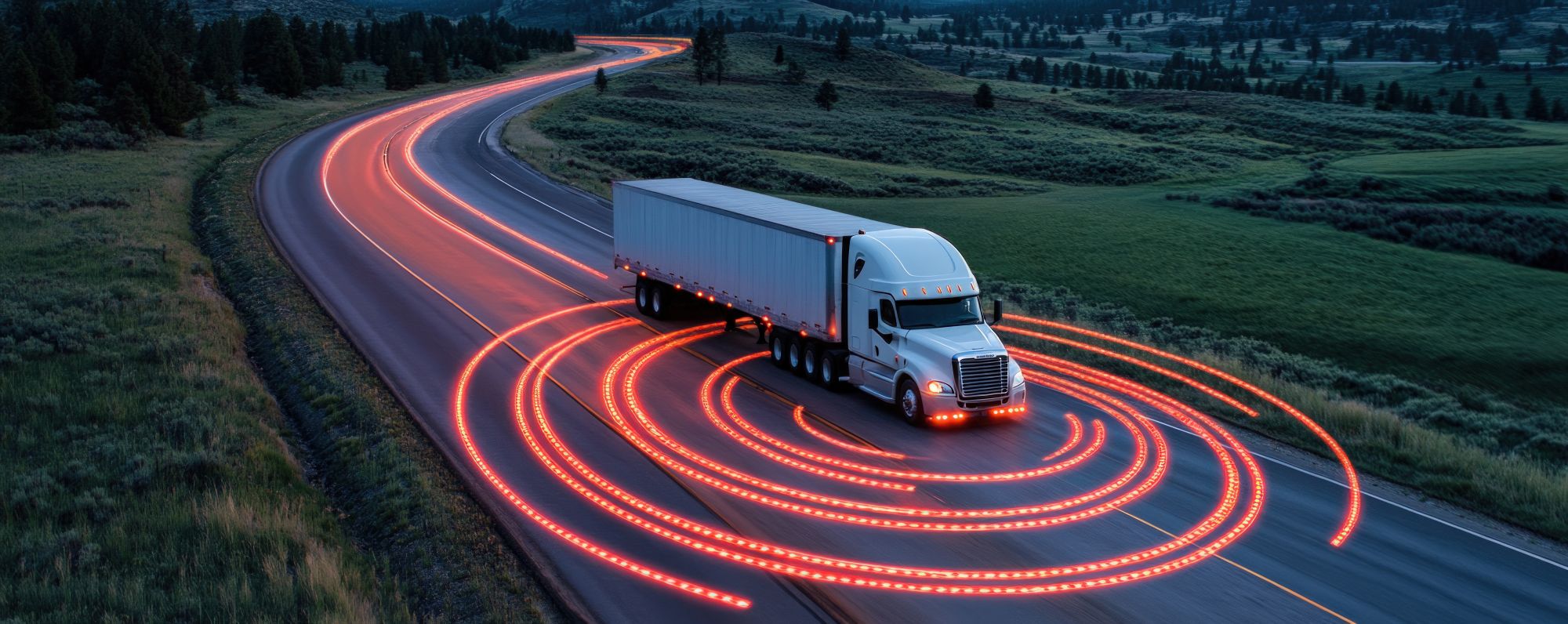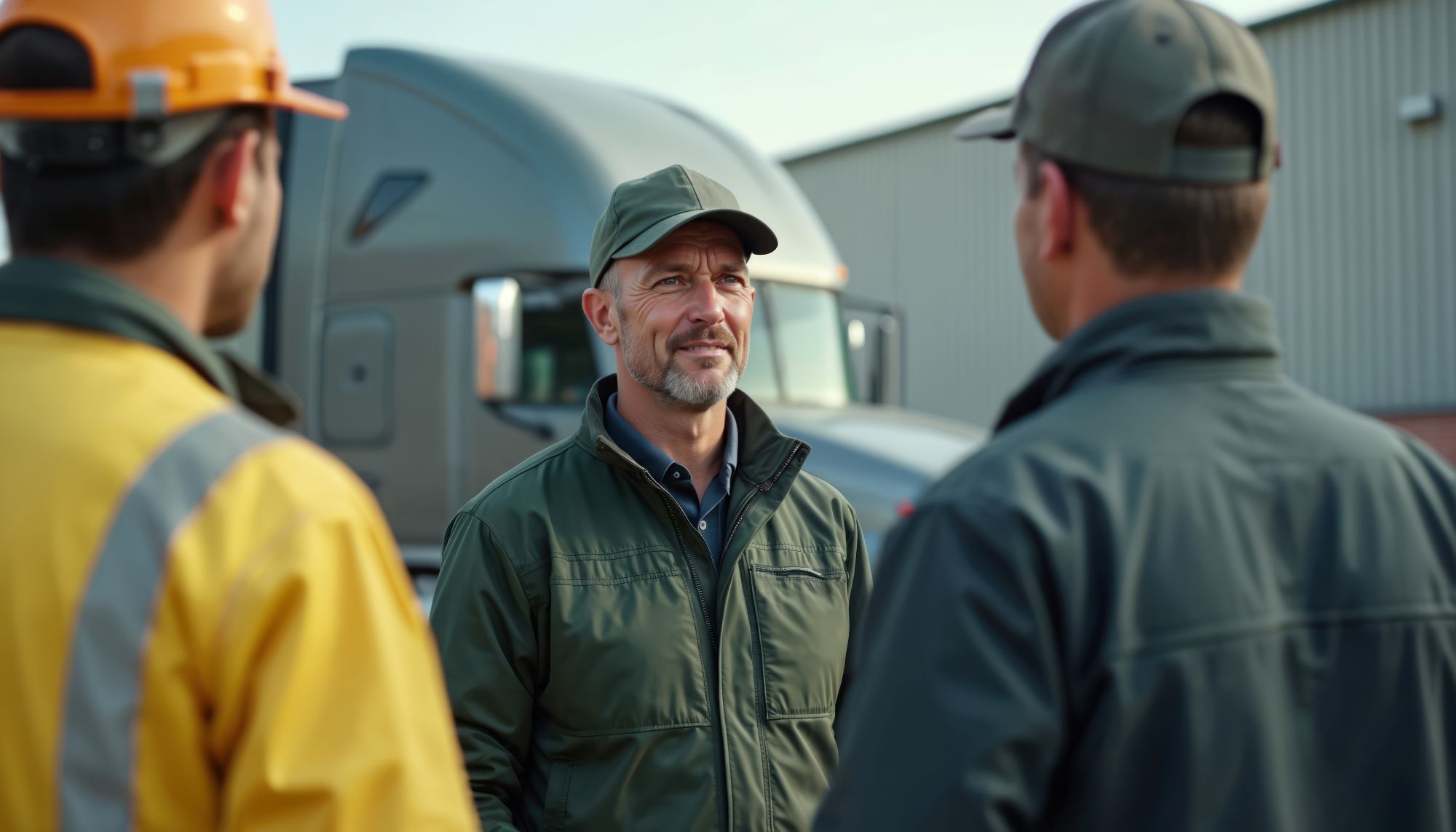
Susie Jones
Camioane autonome: Descoperirea drumului care ne așteaptă
Creat: 16.05.2025
•
Actualizat: 23.05.2025
Camioanele autonome - o idee descurajantă pentru unii, dar, aparent, viitorul industriei logistice. Pe măsură ce tehnologia avansează în acest sector, perspectiva de a avea vehicule parțial sau complet autonome care să vă livreze mărfurile este ridicată. De fapt, conform guvernului britanic, acest lucru s-ar putea întâmpla chiar în 2026, deoarece în mai 2024, Legea privind vehiculele automate (AV) a devenit lege.
Cu toate acestea, ce se întâmplă atunci când un camion autonom intră într-un accident? Cine este răspunzător? În acest blog, vom aprofunda lumea autonomiei, modul în care aceasta ar putea afecta sectorul mobilității, cine este responsabil în cazul producerii unor accidente și ce părere au șoferii despre această schimbare.
Care sunt diferitele niveluri de automatizare?
Există șase niveluri de automatizare a conducerii:
Nivelul 0 - Fără automatizare. Omul efectuează toate sarcinile de conducere.
Nivelul 1 - Asistență pentru șofer. Vehiculul dispune de un singur sistem automat.
Nivelul 2 - Automatizare parțială. Vehiculul poate efectua direcționarea și accelerarea. Cu toate acestea, un om monitorizează în continuare toate sarcinile și poate prelua controlul în orice moment.
Nivelul 3 - Automatizare condiționată. Vehiculul poate efectua majoritatea sarcinilor de conducere. Cu toate acestea, controlul uman este încă necesar.
Nivelul 4 - Automatizare ridicată. Geofencing este necesar, iar vehiculul poate efectua toate sarcinile de conducere în anumite circumstanțe. Controlul uman este o opțiune.
Nivelul 5 - Automatizare completă. Vehiculul îndeplinește toate sarcinile de conducere în toate condițiile. Nu este necesară nicio atenție sau interacțiune umană.
Cum funcționează camioanele autonome?
Senzorii, camerele și inteligența artificială permit camioanelor autonome să conducă independent. Programele avansate iau decizii în locul șoferilor umani.
Problemele cu care s-ar putea confrunta industria
Aspecte juridice - Cine este răspunzător în cazul producerii unor accidente? Este șoferul, angajatorul său sau compania de întreținere? Vom detalia acest aspect mai jos.
Infrastructură - Drumurile noastre existente sunt construite pentru o lume a motoarelor pe benzină. Prin urmare, infrastructura trebuie modernizată sau înlocuită pentru a sprijini flotele de vehicule care se conduc singure, ceea ce necesită bani și o voință politică substanțială.
Schimbări societale - Va trebui să aibă loc și o evoluție a atitudinii publice. Perspectiva vehiculelor cu inteligență artificială este descurajantă pentru mulți, cu preocupări legate de siguranță, urmărirea călătoriei și zonele gri din punct de vedere juridic privind accidentele rutiere.
Securitate - Un sistem care se bazează pe rețele digitale devine mai vulnerabil la amenințările cibernetice.

Ce cred șoferii de camioane despre camioanele autonome?
Siguranța camioanelor autonome a fost un subiect fierbinte de discuție în cadrul sectorului, mulți dezbătând dacă tehnologia este la un standard fiabil pentru a face față vremii imprevizibile și pentru a recunoaște obstacolele - un lucru care îi îngrijorează pe șoferii de camioane pe paginile de social media ale SNAP:
"La cea mai mică ploaie, autocamionul meu își pierde toate capacitățile automate, AEBS și cruise control. Camioanele nu vor fi lăsate să se conducă singure fără șofer prea curând."
"Acest lucru va omorî mai mulți oameni pe drumuri și va provoca mai multe cozi. Gândiți-vă doar cât de fiabile sunt sistemele electronice de pe vehiculul dumneavoastră Euro 6. Aceiași oameni fac camioane autonome."
Aspecte juridice - cine este responsabil în caz de accident?
În cazul unui accident, responsabilitatea poate fi transferată între șofer și producător. Instanța trebuie să stabilească dacă un accident a fost cauzat de o defecțiune tehnică, de o întreținere necorespunzătoare sau de o eroare a conducătorului auto.
Răspunderea producătorului
Un producător va deveni răspunzător în următoarele cazuri: - Defecțiune a senzorului
Defecțiuni ale software-ului
Măsuri neadecvate de securitate cibernetică
Testare inadecvată
Răspunderea șoferului/flotei
Șoferul unui autocamion autonom poate fi tras la răspundere pentru un accident în cazul în care neglijează service-ul sau întreținerea necesare pentru ca vehiculul să funcționeze în mod corespunzător - s-ar putea spune că această răspundere ar putea reveni și administratorilor de flote.
În ciuda acestui fapt, există încă o anumită confuzie în rândul celor din sectorul mobilității. Am întrebat șoferii de camioane pe [paginile noastre de social media] (https://www.facebook.com/snapaccount?locale=en_GB) cine cred ei că ar fi tras la răspundere în cazul unui accident cu un vehicul autonom. 51% dintre șoferi au crezut că șoferul ar fi responsabil, 37% au sugerat producătorii de camioane automate, iar 12% au crezut că dezvoltatorii de software.
Este evident că este nevoie de mai multe clarificări în rândul celor din sector înainte ca autocamioanele autonome să devină o prezență permanentă pe drumurile noastre.
Cum arată viitorul?
În campania sa revizuită [TruckPark of the Future] (https://snapacc.com/truckpark-2049/), SNAP analizează viitorul sectorului mobilității. Pe măsură ce tehnologia avansează, vehiculele autonome vor juca un rol semnificativ în industrie, existând 50% șanse ca mașinile să preia toate locurile de muncă ale oamenilor în următorii 120 de ani.
Cu toate acestea, cum se vor descurca cu unele dintre cele mai periculoase autostrăzi din Europa?
A conduce un camion înseamnă mai mult decât a sta la volan - înseamnă adesea a naviga în condiții de drum mereu schimbătoare și imprevizibile. Se pune întrebarea dacă camioanele autonome ar putea face față unora dintre cele mai proaste drumuri din Europa. În cea mai recentă campanie a sa, [Hazardous Highways] (https://snapacc.com/hazardous-highways/), SNAP a identificat cele mai periculoase drumuri din Europa, rezultatele indicând Bulgaria, Lituania și Cehia ca fiind cele mai îngrijorătoare.
S-ar putea spune că camioanele autonome se vor confrunta cu provocări în încercarea de a naviga pe unele dintre aceste drumuri fără interacțiunea umană. Precizia GPS limitată, interferențele senzorilor și lipsa unei infrastructuri coerente ar putea complica lucrurile.



